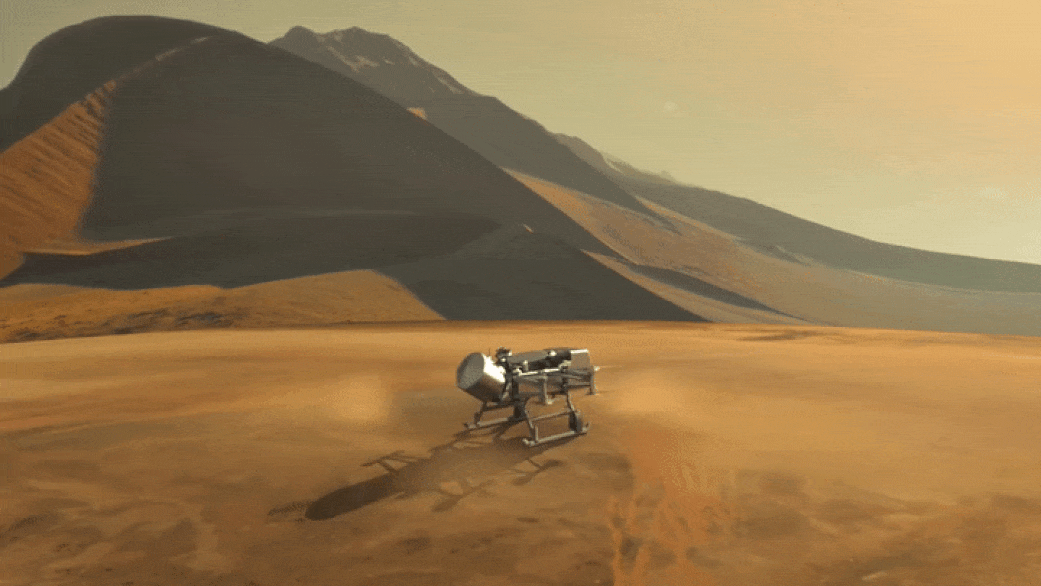It has been said that within the next quarter century, the world’s first trillionaires will emerge. It is also predicted that much of their wealth will stem from asteroid mining, a burgeoning space industry where minerals and volatile compounds will be harvested from Near-Earth Asteroids. This industry promises to flood the market with ample supplies of precious metals like gold, silver and platinum.
Atmosphere of Midsize Planet Revealed by Hubble, Spitzer!
A Whirlpool 'Warhol' from NASA's Spitzer Telescope
How A Historic Jupiter Comet Impact Led to Planetary Defense
Twenty-five years ago, humanity first witnessed a collision between a comet and a planet. From July 16 to 22, 1994, enormous pieces of the comet Shoemaker-Levy 9 (SL9), discovered just a year prior, crashed into Jupiter over several days, creating huge, dark scars in the planet’s atmosphere and lofting superheated plumes into its stratosphere.
Amazing discovery of smallest exoplanet ever!
NASA's Revolutionary Dragonfly Will Fly Around Titan Looking for Origins, Signs of Life!
Accelerating exoplanet discovery using chemical fingerprints of stars
Stars are born when huge clouds of dust and gas collapse in on themselves and ignite. These clouds are made up of raw elements, like oxygen and titanium, and each cloud has a unique composition that imprints on the star. And within the stellar afterbirth – from the material that didn’t find its way into the star – planets are formed.
Lakes on Titan Might Have Exotic Crystals Encrusted Around Their Shores
Titan is a mysterious, strange place for human eyes. It’s a frigid world, with seas of liquid hydrocarbons, and a structure made up of layers of water, different kinds of ice, and a core of hydrous silicates. It may even have cryovolcanoes. Adding to the odd nature of Saturn’s largest moon is the presence of exotic crystals on the shores of its hydrocarbon lakes.
From miniature satellites to giant sun shields – the extreme technology transforming space engineering
This year marks the 50th anniversary of the first Apollo moon landing. This was possible thanks to an extraordinary acceleration of space technology. Within a remarkably short period of time leading up to the event, engineers had mastered rocket propulsion, on-board computing and space operations, partially thanks to an essentially unlimited budget.
Hubble is the Ultimate Multitasker: Discovering Asteroids While it’s Doing Other Observations
Curiosity Sniffs a Spike in Methane. Could it be a Sign of Life?
Since it landed on Mars in 2012, one of the main scientific objectives of the Curiosity rover has been finding evidence of past (or even present) life on the Red Planet. In 2014, the rover may have accomplished this very thing when it detected a tenfold increase in atmospheric methane in its vicinity and found traces of complex organic molecules in drill samples while poking around in the Gale Crater.
Hubble Finds Tiny “Electric Soccer Balls” in Space, Helps Solve Interstellar Mystery
Mars 2020 Rover Gets Its Wheels
NASA Selects Missions to Study Our Sun, Its Effects on Space Weather
What’s it Like to Work for SpaceX?
Two Earth-Like Worlds Found Orbiting a Red Dwarf Only 12.5 Light-Years Away!
In the past few decades, there has been an explosion in the number of planets discovered beyond our Solar System. With over 4,000 confirmed exoplanets to date, the process has gradually shifted from discovery towards characterization. This consists of using refined techniques to determine just how likely a planet is to be habitable.
Explainer: What Is an Atomic Clock?
Oceans, beaches, cosmic shorelines: our changing understanding of habitable planets and habitable zones
Can entangled quantum bits be used to probe black holes?
Earth has a Water Cycle. Mars has a Dust Cycle
To say there are some myths circulating about Martian dust storms would be an understatement. Mars is known for its globe-encircling dust storms, the likes of which are seen nowhere else. Science fiction writers and Hollywood movies often make the dust storms out to be more dangerous than they really are. In “The Martian,” a powerful dust storm destroys equipment, strands Matt Damon on Mars, and forces him into a brutal struggle for survival.
















